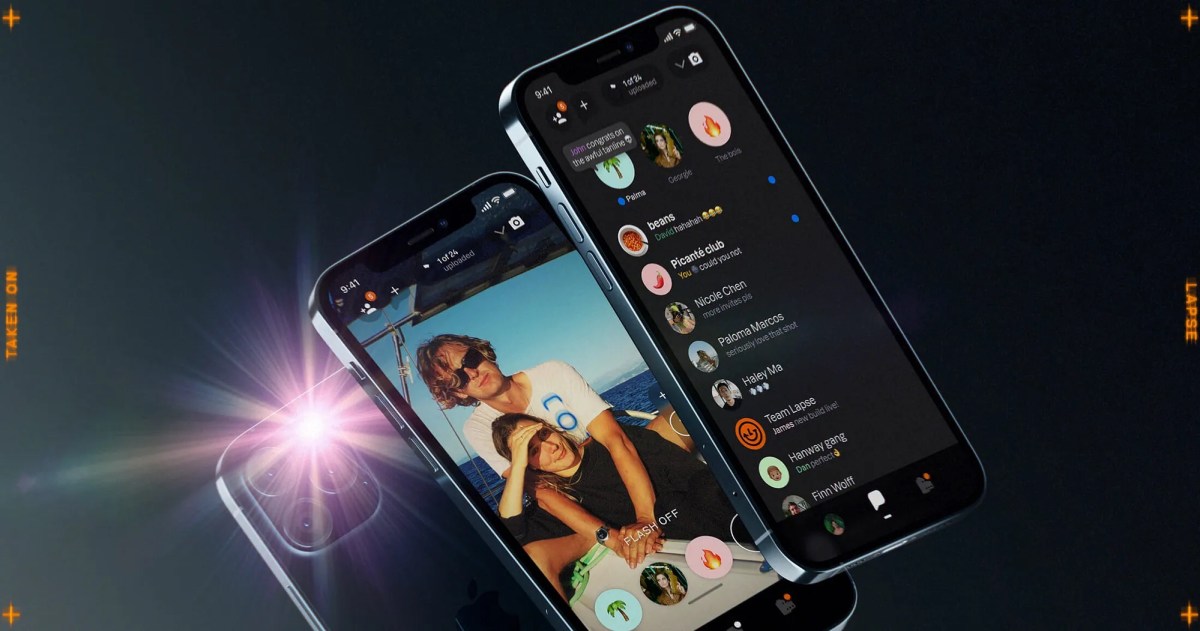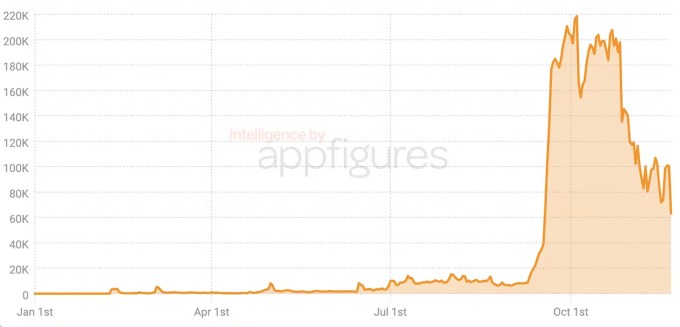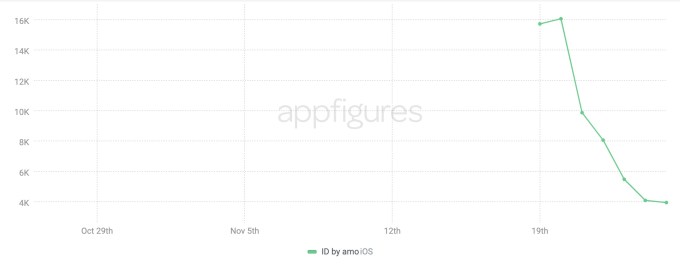Business
Lapse, a photo app that forced users to invite friends, is running out of steam

Lapse, a photo-sharing app that growth hacked its way to the top of the App Store earlier this year, is starting to lose steam. The app, which had forced users to invite their friends in order to get in — a technique now being used by new social app ID by Amo, saw early success with this method of “going viral.” This September, the app jumped from No. 118 Overall to reach No. 1 on the U.S. App Store. However, growth hacks alone cannot sustain an app, a new report shows. Throughout this month and the last, Lapse’s downloads have started to drop and have now fallen as far as 70% down from their October peak.
The data, which comes from app intelligence firm Appfigures, indicates that growth hacking your way to the top of the App Store isn’t a formula for ongoing success unless your product is capable of retaining its new users over the long term.

Image Credits: Lapse downloads via Appfigures
Originally launched in 2021, co-founders (and brothers) Dan and Ben Silvertown said they built Lapse with the idea of recreating the feel of a point-and-shoot camera, where users would take pictures but viewing the photos was delayed. This artificial limitation is a feature that’s been tried before by other photo apps, like Dispo and Later Cam. But after a while, Lapse’s team noticed that users were using Lapse as more of a photo journal, so they pivoted to address this need. The new version of Lapse still retained the gimmick of “developing” its photos at random intervals later in the day but refocused on curating photos into albums and creating user profiles with monthly photo dumps — mimicking a trend also seen on larger apps like Instagram.
With TikTok ads and then its invite mechanism fueling growth, Lapse’s pivot was not always well-received. Sheel Mohnot, a VC at Better Tomorrow Ventures, posted on X, “I felt dirty,” when mentioning the app’s invite scheme. He also added that Lapse “got to the top of the App Store on a pyramid scheme.” Others also called out this type of onboarding as “annoying,” saying it required them to “spam” their friends.
But Lapse held onto its top ranks for a bit. Appfigures notes that Lapse had started the month of September with just 8,000 downloads per day on average but, by month-end, had seen daily downloads of 210,000 per day. It had also become the most downloaded app on the U.S. App Store and continued to rank in the top 5 daily. By October, daily downloads grew to a peak of 218,000 in a single day. But then things started to slide.
While Lapse is gaining new installs, its downloads dropped last week to 63,000 per day this past week, down 70% from its peak. By Friday, Nov. 24th, they were as low as 44,738.
This follows similar trends seen by apps like Dispo and Poparazzi, the latter of which hit over 5 million downloads post-launch, but had to shut down earlier this year after failing to gain significant traction among users. In addition, data from analytics firm Similarweb also cited BeReal as another photo app losing its grip in the U.S., noting that monthly users had declined from 3.7 million in November 2022 to 3 million this August. But BeReal pushed back at that characterization, saying that it still has more than 25 million active users worldwide, without commenting on U.S. usage.
In any event, it does seem to be difficult for newcomers in the social or social photo app space to maintain their momentum, no matter how quickly they’ve climbed their way to the top of the App Store. Meanwhile, despite the buzz around ID by Amo — a quirky new app that combines the collage-making abilities of something like Pinterest’s Shuffles with a social network — the same trend may already be underway.
ID, which was also pushing users to invite friends in order to get in, has seen its installs declining post-launch, as well, Appfigures’ data shows. More to come on that one in time…

Image Credits: ID by Amo downloads via Appfigures
-

 Entertainment6 days ago
Entertainment6 days agoApple Watch Series 9 vs. SE: A smartwatch skeptic tested both for 13 days
-

 Business5 days ago
Business5 days agoGoogle lays off workers, Tesla cans its Supercharger team and UnitedHealthcare reveals security lapses
-

 Entertainment6 days ago
Entertainment6 days agoThe greatest films on Prime Video right now
-

 Business7 days ago
Business7 days agoGoogle dubs Epic’s demands from its antitrust win ‘unnecessary’ and ‘far beyond the scope’ of the verdict
-

 Entertainment2 days ago
Entertainment2 days agoiPad Pro 2024 now has OLED: 5 reasons this is a big deal
-

 Entertainment5 days ago
Entertainment5 days agoLoneliness in kids: Screen time may play a role
-

 Business7 days ago
Business7 days agoApple: pay attention to emerging markets, not falling China sales
-

 Business4 days ago
Business4 days agoThe Rabbit r1 shipped half-baked, but that’s kind of the point



























